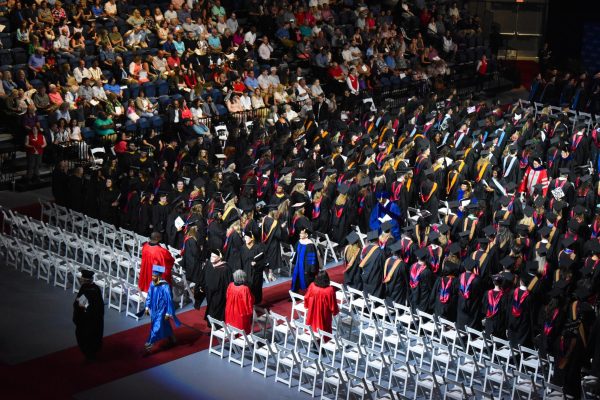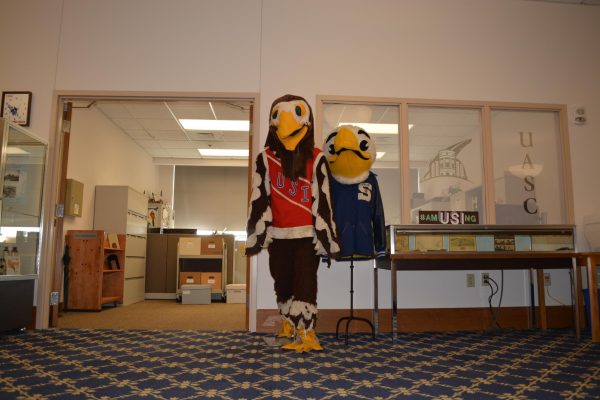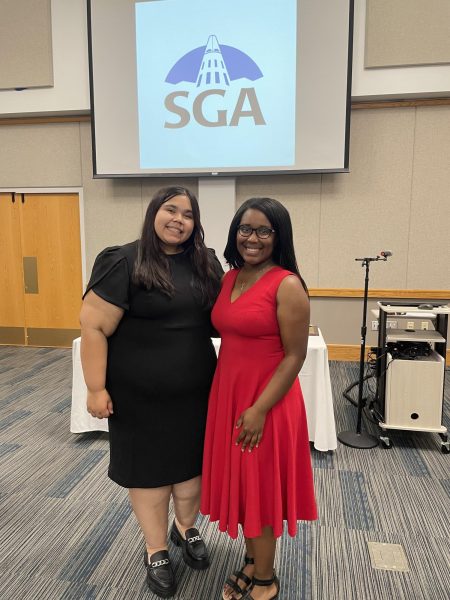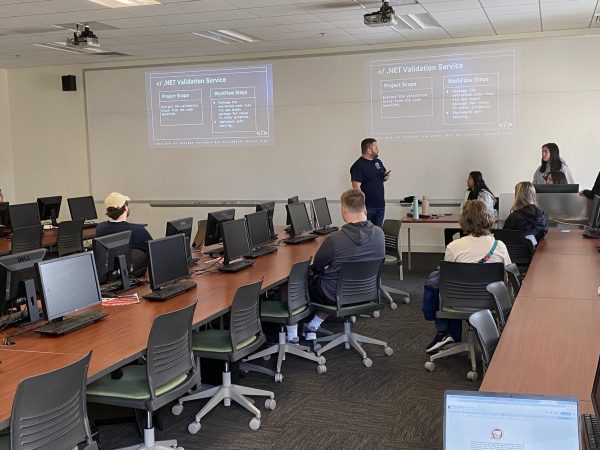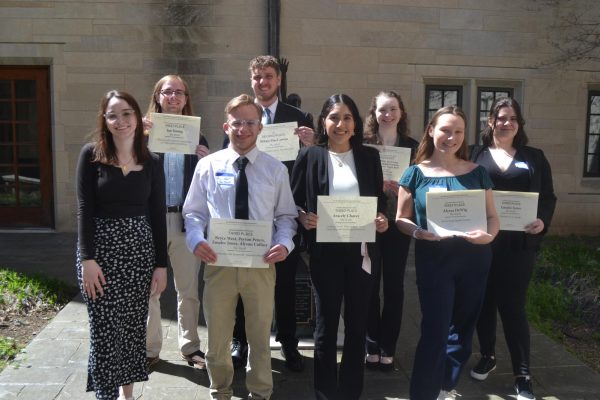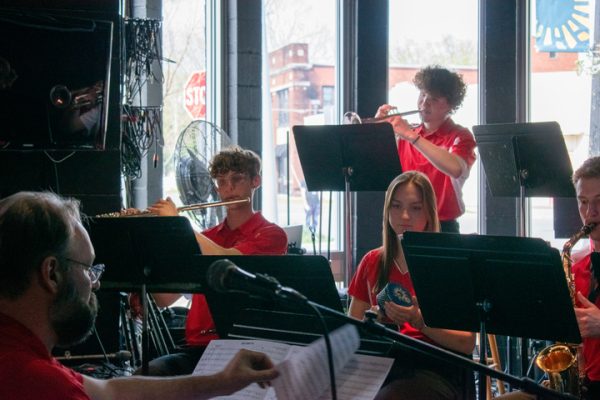University officials say not so fast on paperless timesheets
Despite multiple funding requests for paperless timesheets and inclusion in the university’s strategic plan, the university continues to use paper timesheets.
Executive Director of Human Resources Andrew Lenhardt said that the university is still not paperless in many aspects.
“We are hopeful that we could move forward with an online open enrollment process,” he said. “Each year our benefits start Jan. 1. Changes need to be into us, and we request paper forms because we are still a paper campus in many ways.”
However, online enrollment has not been the Human Resource department’s main focus.
“A couple of years ago there was the strategic plan, I believe from 2015 to 2020,” Lenhardt said.
“It was requested that each department provides their strategic objective. Ours was a paperless timecard system… the implementation of that for the campus community. That relied on budget dollars and approval. We have not received approval to date to start down that path.”
Lenhardt said it has been two years since the last timesheet budget was requested.
Vice President for Finance and Administration Steve Bridges said the push for paper timesheets started as early as 2004.
“We know we’re in the dark ages a bit from the paper perspective… but as you might guess there’s always devil in the details,” he said.
Bridges said the university has looked at alternatives to the current paper system, such as punch card timekeeping systems, but the main issue for the alternatives is cost.
“It’s all about funding,” Bridges said. “When we started off… in the 2010-2012 timeframe, we were looking at about a half million dollars for a project like that with a lot of additional work and some other intricacies in terms of timing and switching our payroll cycles that complicate that a little bit.
The $500,000 price tag was heavy in initial costs, but did include some recurring costs. Since that time the costs have dropped, Bridges said.
“So now just for the student portion of it, our last strategic plan type submission from HR we were at about $80,000 just for the student side of it,” he said. “Software costs have dropped quite a bit.”
A significant portion of this request involved those software costs, Bridges said.
“It’s the banner software system that we would have to work together with to be able to report. That’s where I think about $60,000 of the $80,000 for the student timesheet project would be related to software and making that integration happen,” Bridges said.
Budget and Strategic Planning
Associate Vice President for Finance and Administration Mary Hupfer said that initiatives like automating timekeeping could save money, but there are bigger budget priorities for the university.
“With the timesheets the initiative is very much at the forefront. It’s more a matter of timing and resources at this point,” she said.
Hupfer said for the last four to five years the main focus for the budget hearings has been compensation. This has included across the board compensation and looking at an equity increase for groups that historically have been on the lower end of the pay range.
“Compensation has been the highest priority,” she said.
However, the university budget has made fulfilling the goal difficult.
“In this past biennium, the biennium that we are currently in, funding from the state was very limited. In the first year of the biennium we received $1,394 additional from the state. Nothing,” Hupfer said. “The second year was just a little over $400,000. When we are talking about a 1 percent increase on our payroll, that’s about $750,000 for just a 1 percent increase for all faculty, staff and administrators.”
Hupfer said with limited funds the budget group felt like they needed to do something in the area of compensation.
“For this past year we did a $500 increase for everybody you know for percentage wise for lower paid people it’s a higher percentage but it was just $500 across the board because of the resource situation,” she said.
Budgetary decisions such as these are decided by a budget hearing group that consists of the President, Vice Presidents and Finance and Administration members.
“Our budget process is open to the entire campus,” Hupfer said. “There are various clusters of areas on campus that come together to determine what their priorities are, and then each of the clusters has an opportunity to make a public presentation on what their needs are.”
She said that this process is set to change this year.
“For this year we are taking a step back from that process and evaluating what we want it to look like going forward,” Hupfer said.
Hupfer said this year will include some public presentations, an overview of the funding for the 2018-2019 year by President Ronald Rochon, and a state of the university address on the “fiscal status of the university.”
“Then we are going to meet with those folks that make up those clusters and kinda determine what we want this process to be going forward particularly in light of limited resources,” Hupfer said.
She said it is important to have the opportunity to do strategic planning while acknowledging the needs of the university and the limited resources available.
Hupfer said the budget committee has been working within the framework of the current strategic plan.
“The initiatives in the current strategic plan include purposeful and sustainable growth, lifelong learning for the entire institution and access and opportunity,” she said. “The focus of our last three or four years of budget hearing process has been growth.”
Hupfer said growth does not just mean growth in the number of bodies on campus, but growth in many areas.
“(It includes) growth in compliance, growth in regulation, growth in academic programs, growth in opportunities for students to participate in…growth in opportunity not only for students, but for employees as well with the primary focus of one of those sort of unavoidable things which is compensating the people which you have making things happen.”
Hupfer said the strategic plans have provided framework for the budget hearings and solidified ideas.
“We are very young to have an official strategic plan,” she said. “This is only the second one of the institution. I think as we move forward we will see a lot of development in the way that the strategic plans are put together and what their focuses are. In our first plan we started with six initiatives and this second narrowed down to the three most important initiatives.”
Bridges said he is a big advocate for the direction that the strategic planning has provided at the university.
“You are best when you have an idea of where you are going, otherwise when you get there you don’t know why you even took off in that direction to begin with… so to answer your question about what will the success be in 2020. I think there will be some successes, I think there will be some carry over items and that’s what I anticipate would happen with any strategic plan.”
Bridges said President Ronald Rochon “is continuing the existing strategic plan,” and will evaluate areas he thinks may be more important for the next strategic plan.
“It is certainly going to be built on what we’ve done because it’s a very strong foundation,” Bridges said.
PAC
The biennium state budget is not the only way for the state to receive money. USI is issuing $36 million of bonds in order to fund continued construction of the Physical Activity Center (PAC).
“We went through a rigorous state approval process that starts all the way with the state legislature agreeing to fund the bonds,” Bridges said. “It goes through the state budget agency the house, the commission for higher education, the governor and then the Indiana Finance Authority looks at the deal as well.”
He said the bonds are essentially a loan where investors will provide money to the university.
“These are fee-replacement bonds meaning we pledge student fees towards this and we pay the debt payment and the state of Indiana reimburses us. They can’t commit from legislative session to legislative session for this, but they’ve never not made a payment for fee replacement,” Bridges said.
Bridges said Indiana is one of the few AAA rated states in the United States, and that the university has been rated and listed as a stable investment.
“We plan to sell those on (Jan. 23) if the market is good,” Bridges said. “Investment bankers go out and start talking to potential investors now.”
Bridges said the bankers have a presentation they will give to help sell the bonds to investors.
“If the market looks good on the 23rd and we feel like the pricing will be good, we will probably sell on the 23rd… our final close date will be Feb. 12,” he said.
Bridges said the bond funding came about because there were issues in the first phase of construction.
“We were looking at redoing the existing PAC and as we started to do that we found a lot of complications,” he said.
Bridges said there were support poles in the way and utilities in the wrong spots. This resulted in plans for the PAC changing.
“It became clear in the process that we were going to have issues and that we should consider taking the existing PAC now and use that as multi-purpose space and build the arena instead because we were going to come out much better than the opposite way,” Bridges said.
Bridges said there were several additions that needed to happen to the existing PAC, including faculty offices and community learning spaces.
“That building was built in 1980 and certainly was changed. There were 2,000 students when we built that building. We’ve gotten the money’s worth out of it, but we came back for phase two because we realized we need to update some things in the PAC,” he said.
Bridges said the PAC needs to feel more like a home for the students that are there every day for their academic programs.
“When you look at USI and USI’s reputation… the buildings that you are in and that you are a part of that have pretty state of the art academic elements aren’t seen by the public,” he said.
Bridges said people form opinions about the university based on what they see.
“This university deserves that building because it will show how far we’ve come and how good our reputation really is,” Bridges said. “I think as they come in they’ll see that, and I think that is a really important element to that project.”

